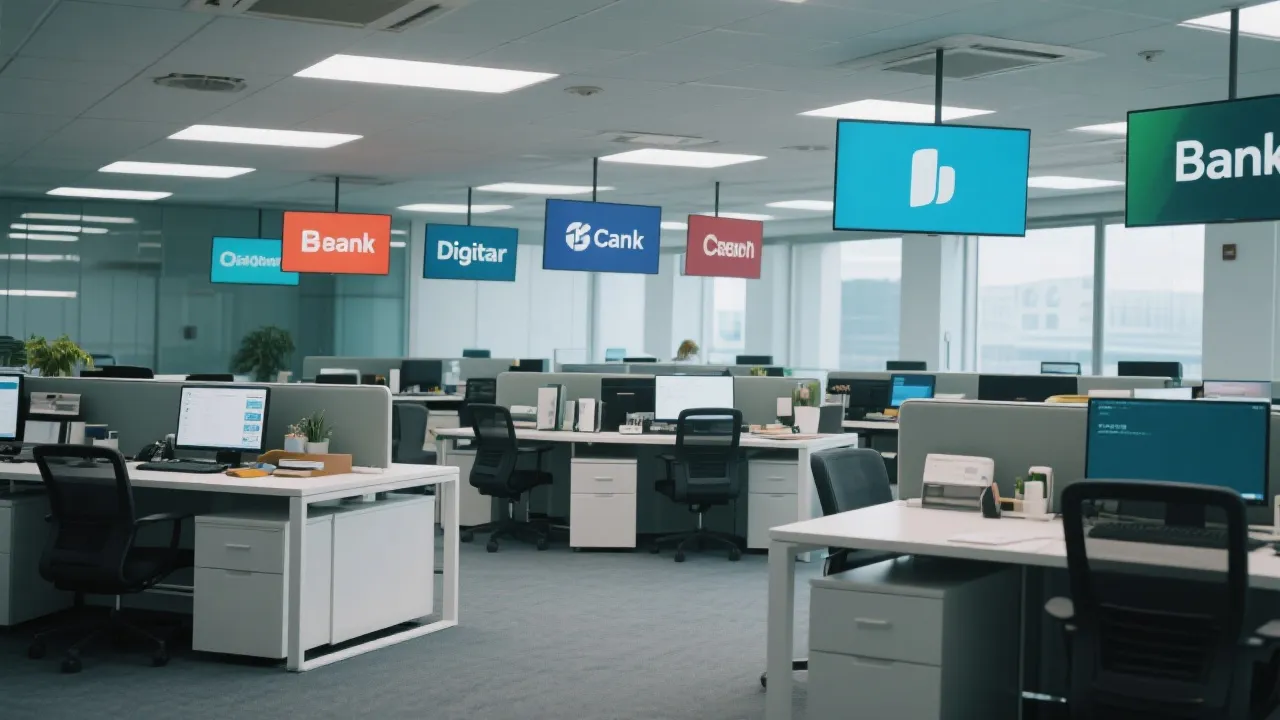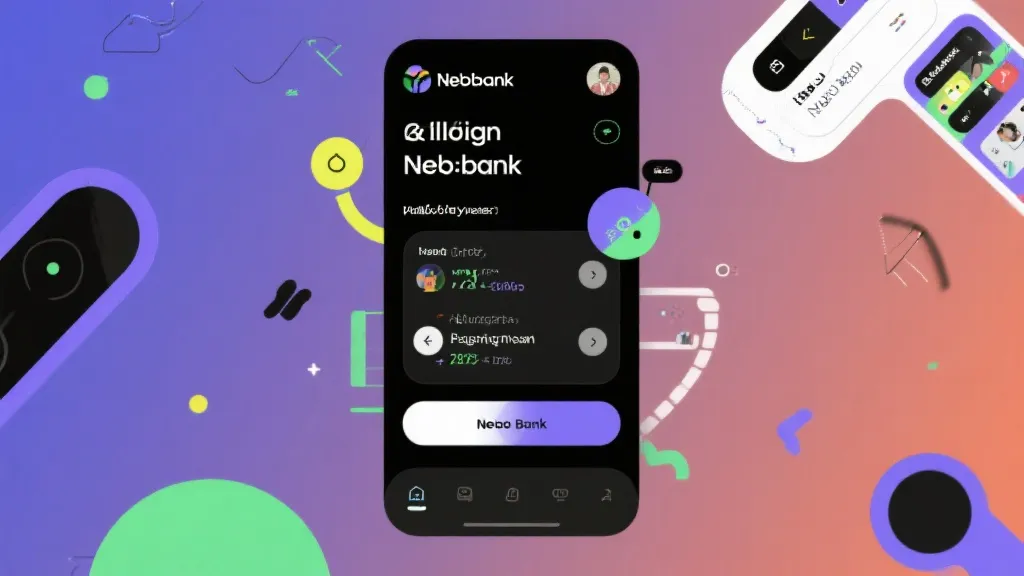This article examines the competitive landscape for Webbank, a digital financial service provider renowned for its innovative banking solutions. By analyzing its primary competitors, we explore the dynamics shaping the banking sector. Our focus includes market strategies, technological advancements, and customer engagement methods employed by leading digital banks in contrast to Webbank.

In the rapidly evolving world of digital banking, Webbank has emerged as a prominent player. Known for its cutting-edge technology and user-friendly banking solutions, Webbank has transformed the way consumers interact with financial services. However, no market leader can remain unchallenged; Webbank operates in a competitive environment alongside several other established and emerging digital banks. The insights we gather about the competitive landscape not only highlight the strengths and weaknesses relative to Webbank but also provide a detailed overview of how the digital banking sector is shaping up for future growth and innovation.
Amid the emergence of digital banks, several notable competitors have established strong footholds in the market. Companies like Chime, Revolut, N26, and others stand out due to their unique value propositions, which provide them with a competitive edge against traditional banks and each other. For instance, Chime offers no-fee banking that resonates well with consumers wary of hidden charges, while Revolut captivates users with its multi-currency capabilities that facilitate overseas transactions without the hefty fees typically associated with traditional banks. N26 stands tall with its emphasis on robust security features that appeal to customers concerned about digital fraud. Other competitors, like Monzo and Ally Bank, have equally carved out niches, focusing on customer experience and innovative banking services.
To better understand Webbank's position, we must delve into a comparative analysis that identifies the strengths and strategies of its primary competitors:
| Bank | Key Features | Market Strategy |
|---|---|---|
| Chime | No monthly fees, early paycheck access, savings tools with round-up features | Focuses on customer loyalty through fee elimination and innovative savings strategies |
| Revolut | Global spending capabilities, comprehensive cryptocurrency support, and premium accounts with additional features | Targets tech-savvy customers looking for versatility in financial tools |
| N26 | Simple mobile banking experience, stringent security measures, and various debit card personalization options | Emphasizes user experience and security innovations while attracting international customers |
| Monzo | User-friendly interface, budgeting tools, and real-time transaction notifications | Focuses on transparency and customer feedback to drive product development and customer support |
| Ally Bank | High-yield savings accounts, no monthly maintenance fees, and customer-centric service | Targets customers seeking reliable and accessible banking alternatives with favorable terms |
Digital banks are continually incorporating the latest technology to enhance user experience and operational efficiency. Webbank, alongside its competitors, utilizes artificial intelligence (AI), blockchain technology, and data analytics to cater to the dynamic needs of customers. AI is leveraged to offer personalized financial advice, predict user spending patterns, and enhance customer service through chatbots and automated responses. Additionally, blockchain technology provides a secure and transparent means of transaction verification, while data analytics allows banks to derive insights from customer behavior, tailoring offerings to enhance satisfaction and engagement.
This innovative spirit isn't limited to established players; newer entrants continue to challenge the status quo by adopting cloud technology to increase scalability and flexibility. Webbank emphasizes integration capabilities that facilitate direct communication with third-party financial service providers, thereby expanding the range of services available to customers. This not only drives user adoption but enhances the overall banking ecosystem by fostering innovation through collaboration.
Customer engagement remains paramount in retaining clientele, especially in an industry where switching costs are minimal. Webbank and its competitors have adopted various engagement strategies to meet the expectations of today’s tech-savvy consumers. Loyalty programs have gained popularity, often featuring cash back on purchases or rewards points that can be redeemed for services. Personalization is another critical strategy; banks analyze user data to provide tailored recommendations and initial onboarding experiences that resonate more specifically with individual needs.
Moreover, the user experience plays a crucial role as financial institutions strive to create intuitive app interfaces. These interfaces often include features that allow for easy navigation, seamless transaction capabilities, and comprehensive visibility on finances. Webbank has taken particular strides in enabling users to receive personalized financial advice through in-app features that promote spending awareness and savings goals. This proactive approach helps build trust and encourages users to remain loyal to the institution.
While the digital banking sector offers vast opportunities for growth, it faces challenges such as regulatory compliance, cybersecurity threats, and increasing demands for technological innovation. Each of these obstacles presents both risks and avenues for differentiation. Regulatory compliance can strain resources as banks work to align their operations with ever-changing legal landscapes; however, those institutions that preemptively adapt can afford to build trust with consumers who prioritize secure banking options.
Cybersecurity represents another critical concern. As digital banking continues to grow, so too do the threats posed by cybercriminals. Banks must invest heavily in security measures, including encryption technologies and multi-factor authentication systems. While such investments are costly, they present long-term implications for consumer trust and brand loyalty as customers prefer banks that offer the highest standards of safety.
However, opportunities abound for entities like Webbank to expand into untapped markets. In particular, there is significant potential for growth in regions with underserved populations where mobile banking could easily flourish. Additionally, aligning with fintech companies to enhance service offerings can yield mutual benefits; with the right partnerships, banks can innovate rapidly while mitigating some of the risks involved in developing new technologies.
The future of digital banking competition is poised to revolve around technological advancements, strategic partnerships, and enhanced customer-centric approaches. Emerging trends indicate a stronger reliance on artificial intelligence, machine learning, and open banking practices that encourage the fluid exchange of information between banks and third-party providers. Open banking, in particular, promises to foster an ecosystem where customers can choose from a range of financial services seamlessly integrated into one platform.
Webbank, along with its competitors, must remain agile and innovative. Emerging technologies such as augmented reality (AR) could be utilized for engaging user experiences, while further advancements in AI might enable banks to offer ever more personalized services. As user expectations evolve, the ability of institutions to respond swiftly to market demands and technological trends will be critical in maintaining their competitive edge.
The regulatory environment significantly affects how digital banks operate, pushing them to prioritize compliance and risk management while fostering innovation. Regulations such as the General Data Protection Regulation (GDPR) in Europe and the Dodd-Frank Act in the United States shape how banks handle data, provide services, and maintain transparency with consumers. For instance, compliance with GDPR obligates banks to implement stringent data protection measures, which, while potentially costly, also serve to enhance customer trust in digital platforms.
Additionally, regulations related to cryptocurrency and blockchain solutions are evolving. Financial institutions are beginning to explore how to incorporate digital currencies into their offerings while navigating a complex web of laws and guidelines. Webbank and its competitors must stay informed about these changes as they can have immediate effects on banking operations, risk assessments, and customer outreach initiatives. The ability to successfully adapt to these changes can result in a stronger market position as consumers grow increasingly aware of regulatory compliance as an indicator of stability and trustworthiness.
Shifting consumer preferences significantly shape the digital banking landscape. A growing number of consumers expect financial services to be easily accessible and seamlessly integrated into their daily lives. Convenience is a critical factor driving demand for digital banking services; users prefer having the ability to manage their finances through mobile apps, making transactions quickly and securely. Webbank has recognized this shift and continues to enhance its mobile interface to meet and exceed customer expectations.
Moreover, as younger generations enter the workforce, their preferences for banking products differ from those of previous generations. Millennial and Gen Z consumers value not only convenience but also ethical and responsible banking options. They favor institutions that support sustainability efforts and socially responsible investing. This has prompted Webbank and its competitors to promote initiatives that drive both innovation and a positive social impact. As banks adapt their products and marketing strategies to align with these values, they can foster loyalty that translates into long-term customer relationships.
Strategic partnerships have become a cornerstone of innovation within digital banking. Collaborating with fintech startups enables traditional and digital banks to leverage new technologies and offer enhanced services. For example, partnerships with firms developing payment processing solutions or blockchain technology can help banks streamline their operations and provide better services to customers. Webbank recognizes the benefits such alliances bring, integrating with fintech companies to create a more robust ecosystem that drives value for their users.
Additionally, partnerships that offer rewards programs with retailers or travel companies enhance consumer engagement. By allowing users to earn cashback or points for everyday spending, banks can build loyalty and encourage further banking transactions. The opportunities for co-marketing and cross-promotion created through these partnerships can amplify brand visibility and attract new clients through shared advertising efforts.
As the digital banking sector becomes increasingly competitive, globalization presents both challenges and opportunities for banks striving to enter new markets. Companies such as Revolut have benefitted from global reach, allowing them to capitalize on diverse user bases across different countries. Webbank, too, has an opportunity to expand its services internationally by identifying regions where demand for digital banking solutions is growing.
Market-entry strategies may also include partnerships with local financial institutions, facilitating smoother transitions into new markets while allowing for adherence to regional regulations. Engaging in joint ventures can provide shared resources and skills that bolster market entry success. Tailoring product offerings to meet the cultural and economic needs of consumers in various regions also remains critical. Localized marketing strategies and service adjustments based on regional preferences can position Webbank favorably against competitors with deeper local roots.
In conclusion, Webbank's competitive landscape is vibrant, fueled by technological advancements, shifting consumer preferences, and regulatory considerations that shape the future of digital banking. To thrive, Webbank must remain proactive in its strategies, continuously innovating and adapting to remain relevant in a fast-paced environment where consumer expectations are always on the rise. Efforts focused on enhancing customer engagement, employing innovative technologies, and forming strategic partnerships will be key to ensuring sustained growth and success in an ever-evolving digital world.
What makes Webbank different from its competitors? Webbank distinguishes itself with its user-centric design, low fees, and advanced technological integration, providing seamless banking experiences tailored to customer needs.
How do digital banks ensure security? Security measures such as encryption, two-factor authentication, and continuous monitoring are employed to protect customer data. Regular audits and compliance with industry regulations further enhance security postures.
What role does technology play in digital banking? Technology is pivotal for efficient service delivery, personalized customer experiences, and maintaining a competitive advantage in the market, allowing banks to innovate and scale their offerings effectively.
Are digital banks as reliable as traditional banks? Digital banks adhere to stringent regulatory standards set by financial authorities, offering reliable services with added convenience and innovative features that enhance user experience.
What future trends should we expect in digital banking? Expect to see advancements in AI-driven personalized services, the growth of open banking, increased focus on ethical banking practices, and enhanced cybersecurity measures as key trends shaping the future of digital banking.
Understanding Sme Neobank Impact

Exploring Webbank and Its Competitors

Discover Westminster Plaza Orlando

Discover Heartis Eagle Mountain Elegance

Westminster Plaza Orlando: A Comprehensive Guide

Transforming Banking with Sme Neobank

Discovering Westminster Plaza Orlando

Discovering Westminster Plaza Orlando

Life Insurance for Seniors: Maximizing Coverage and Benefits
